New England Gardening Advice By the Month -April
Last Updated:
The month of April truly ushers in the season of Spring in New England. Snowdrops, crocuses, and then daffodils seem to sprout and bloom overnight, usually on the heels of a two or three day warm spell. These occur in the early part of April in the south coastal regions of Rhode Island, Connecticut, and Massachusetts, and in the latter part of the month in New Hampshire, Vermont, and Maine.
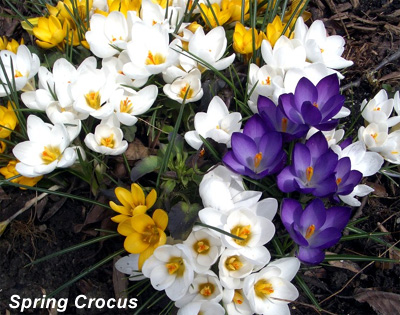
As soon as the outside temperatures allow, its time to remove any dead or decaying matter in your New England garden that may be covering up your spring flowers. Its important to rake the garden beds BEFORE they start growing or you can damage the plants, removing the flowers accidentally or even killing the plant before it gets a chance to flower and set leaves.
What to do with all that stuff you raked out of the garden? If you have the room, we highly suggest buying a small composter online. They have the best selection to fit your needs and will run you between $50 and $150. They can be an invaluable tool to keep your garden weed-free, fertilized and reducing the burden on your watering can. If you don't have the room, most towns have pickup days during the month where they'll take garden refuse or a landfill close by. If you can budget for one, we recommend the product below for its size, durability and value.
FCMP Composter
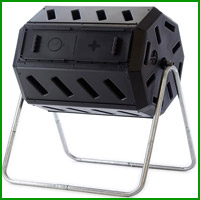
- large 37 gallon capacity
- sturdy construction, easy to assemble
- does a great job keeping out pests
 DISCLAIMER: We may earn commissions on products sold through Amazon
DISCLAIMER: We may earn commissions on products sold through Amazon
If you have a vegetable garden, or are planning one for this year, now is also the time to turn over the soil from your annual vegetable areas and rake any debris covering perennial vegetables such as asparagus. Again, doing this early makes clean up MUCH easier than trying to work the soil around the vegetables later on after they are established and growing. Believe it or not, by the end of April you can plant peas and lettuce in most of New England directly by seed in the ground for a beautiful spring crop of snow peas and boston lettuce. These vegetables love the cooler days and nights and actually grow much better than in summer heat.
Lastly, if you are inclined to grow your own vegetables from seed, many of the summer ripening varieties of tomato especially will benefit from an early headstart from seed on a sunny windowsill. If you don't have adequate light, however, the seedlings can become long and weak over the next 8 weeks and may be unusable in the garden. So, be sure you have them in a south facing window that gets at least 4-5 hours of direct sun daily. On warm days, open the window and let the breeze blow on the plants. This helps to harden the tissue on the stem so that when you plant them outside, their stems will be able to take the strain of blowing in the wind. It can take up to two weeks to "harden" plants from windowsill to garden so every little bit helps along the way.
TIP: Skip the Long Process of Planting Tomatoes from Seed and Buy Plants Online
Gardening has come a long way in recent years, especially with the internet. Today, you can order your tomato plants online now, and they'll be delivered to your door when it's time to plant. To be perfectly honest, we've chosen this route for over 5 years now, and we have never been disappointed. Why? Because we can still get access to great heirloom varieties that aren't in the big box garden centers without the hassle of starting from seed 2 months in advance. Plants can run a little more than a garden center, but boy are they WORTH IT. You get to plant a great selection of tomatoes, from early producers to the juiciest beefsteak varieties available. Here we've listed our hand-picked varieties to grow, and they can all be ordered online! What's not to love. To learn more about planting tomatoes in New England, visit our >>Growing Tomatoes Article for more detailed information.
TIP: Buying Tomatoes
Don't be tempted to buy tomatoes growing in small containers. They are often cheaper but the problem is that their roots have already taken over the entire soil area. That means when you go to plant them, they will have a HARD time extending their roots out, and you will have a tomato plant that is unhappy and not very productive. Get your plants in pots that almost look too big for the plant, then you know the roots won't be crowded. Lastly, and most importantly, DON'T WAIT to buy tomato plants online, they often sell out in April. If you get them too early to plant, just set them in a sunny window for a week or two. Trust us, we've waited too long before and had to settle for varieties that aren't as good.
Bonnie Patio Tomato Plants
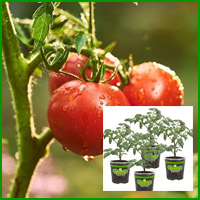
Why We Chose This for New England Gardeners
- big harvest, small space
- good disease resistance, determinate
- just 2 feet tall, tomatoes in 70 days!
 As an Amazon Associate I earn from qualifying purchases
As an Amazon Associate I earn from qualifying purchases
Black Prince Cherry Tomato Plants
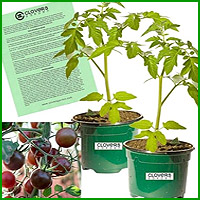
Why We Chose This for New England Gardeners
- great for cooler climates, indeterminate
- small fruits ripen earlier, ok in pots
- unique dark red color, delicious taste
 As an Amazon Associate I earn from qualifying purchases
As an Amazon Associate I earn from qualifying purchases
Pineapple Tomato Plants
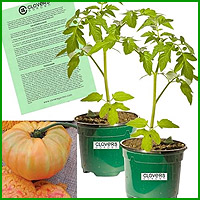
Why We Chose This for New England Gardeners
- one of the best-tasting tomatoes we've ever grown
- heirloom variety produces big juicy tomatoes, indeterminate
- lighter color tomato with less acid than red tomatoes
 As an Amazon Associate I earn from qualifying purchases
As an Amazon Associate I earn from qualifying purchases
Mr. Stripey Tomato Plants

Why We Chose This for New England Gardeners
- delicious orange and red striped fruit, indeterminate
- heirloom variety produces big juicy tomatoes, late season
- fruits can weight almost a pound each!
 As an Amazon Associate I earn from qualifying purchases
As an Amazon Associate I earn from qualifying purchases
Lemon Boy Tomato Plants
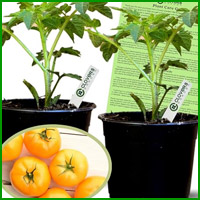
Why We Chose This for New England Gardeners
- we grow this every year for its low-acid dependable tomatoes, indeterminate
- very hard to find yellow tomato plants
- excellent disease resistance makes them low maintenance
 As an Amazon Associate I earn from qualifying purchases
As an Amazon Associate I earn from qualifying purchases